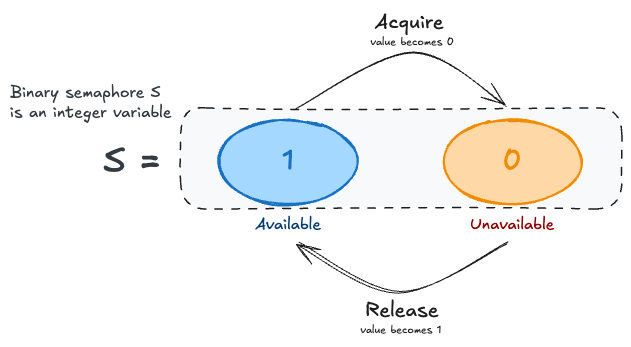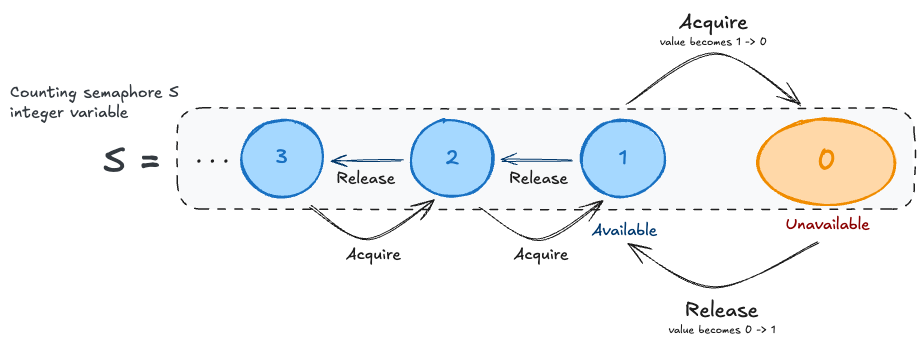Semaphore vs. Mutex
Key words
task, shared resource, wait, release, task synchronization
What is semaphore?
In operating systems, semaphore is defined as an integer variable to handle task scheduling. There are two types of semaphores: binary semaphore and counting semaphore.
Binary semaphore

“Binary” semaphores have a value of either 0 or 1. Because they behave similarly to mutex, it can be confusing. We will discuss the difference between the two later.
Binary semaphores are implemented through xSemaphoreCreateBinary() method.
1
SemaphoreHandle_t xSemaphoreCreateBinary( void );
I strongly recommend you to read through FreeRTOS official document1.
Counting semaphore

What is mutex?
As the word “mutex” implies, it provides mutual exclusion for multiple tasks. However, it is different from semaphores in that it acts as a lock. Mutex also claims ownership of the lock, while semaphore does not.

What are differences?
Semaphores, like mutex locks, can be used to provide mutual exclusion. Whereas a mutex lock has a binary value that indicates if the lock is available or not, a semaphore has an integer value and can therefore be used to solve a variety of synchronization problems.
References
- https://www.freertos.org/Documentation/02-Kernel/04-API-references/10-Semaphore-and-Mutexes/00-Semaphores
- https://www.geeksforgeeks.org/mutex-vs-semaphore/
-
https://www.freertos.org/Documentation/02-Kernel/04-API-references/10-Semaphore-and-Mutexes/01-xSemaphoreCreateBinary ↩